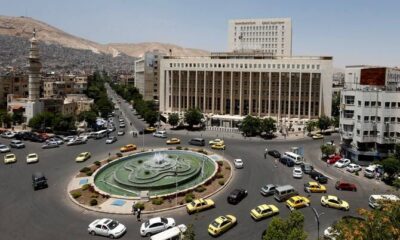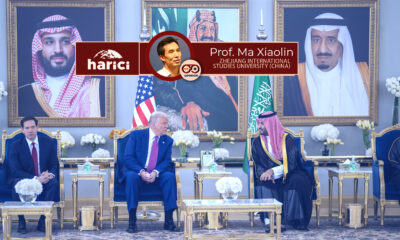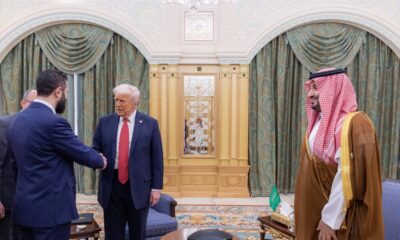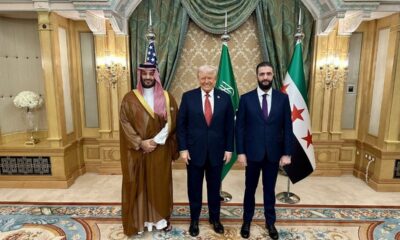Opinion
Normalization with Syria is both easy and very difficult
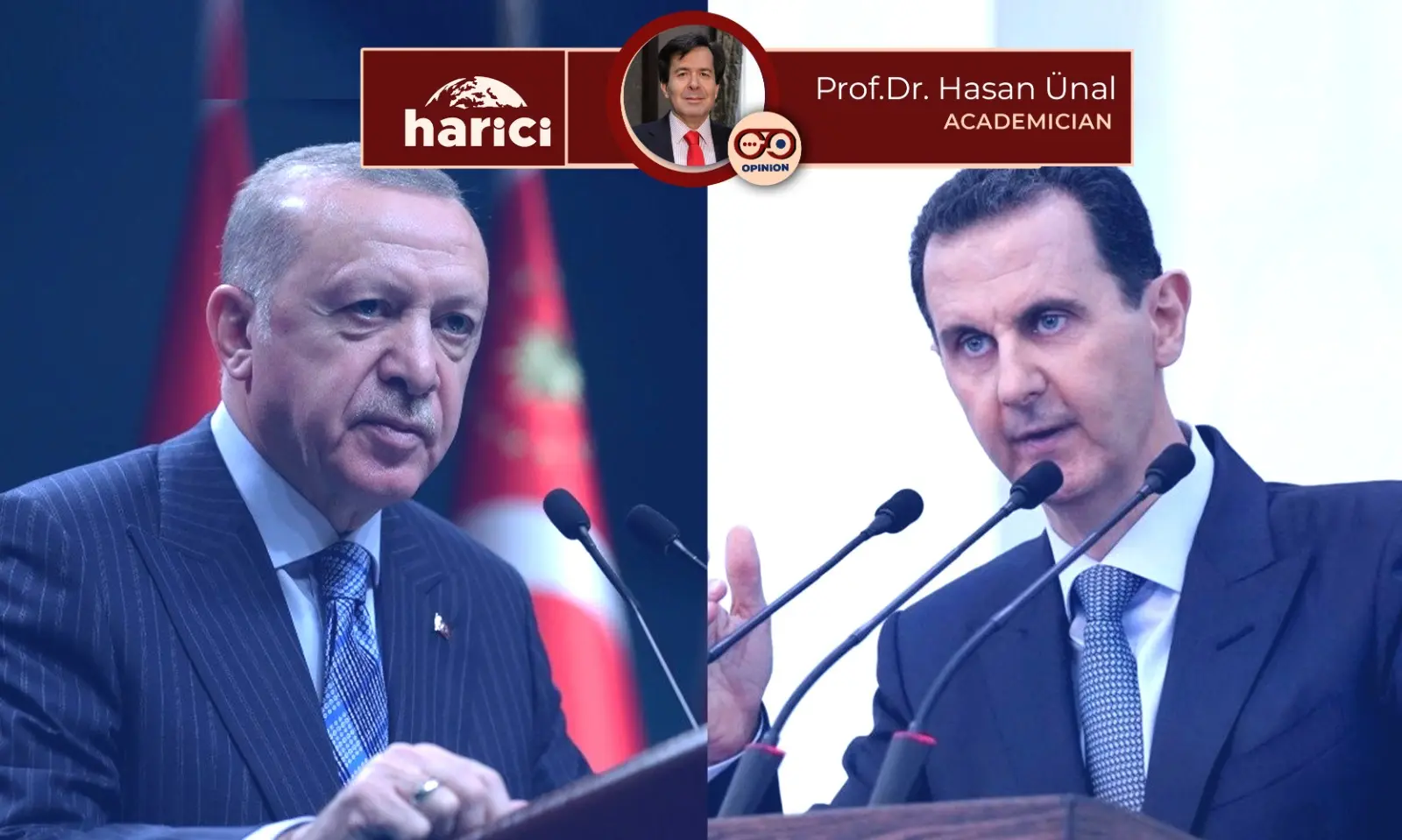
It should be noted with concern that the talks between the deputy foreign ministers of Türkiye and Syria scheduled for March 15-16 in Moscow, which were supposed to pave the way for normalization between Ankara and Damascus, have been postponed. Based on the media reports, it is possible to conclude that the postponement was due to statements made by Syrian President Assad to the Russian press.
In this statement, Assad underlined two issues in particular. The first is Türkiye’s withdrawal from Syrian territory, which it controls, and the other is Ankara’s refusal to support groups seen as terrorists by the Damascus government. If we really want to normalize relations with Syria, we need to consider these demands.
GRADUAL WITHDRAWAL FROM SYRIAN TERRITORY
First, it is very useful to make this analysis by putting ourselves in the position of the Syrian and Damascus governments and then focusing on what we want to achieve with normalization with this country. For example, how long do we want to stay in the territory we control in Syria? If we are not opposed to these territories coming under Syria’s full and effective sovereignty, and if it is only a question of timing or timetable, the problem can be overcome. For example, why is it not possible for the Syrian state to gradually appoint administrators to the lands we control and to integrate these lands into its administrative system within the framework of a certain calendar when an agreement is signed with the Damascus government in line with our expectations from Syria (return of asylum seekers and joint fight against terrorism)? More precisely, why not consider signing another agreement with the government in Damascus to cede these territories to Syria’s direct and effective sovereignty once we have reached a compromise with Syria on issues such as the return of asylum seekers and the updated implementation of the Adana Agreement?
Accordingly, once a common ground on the asylum seekers and the Adana Agreement is found, Türkiye would sign an agreement committing to cede these territories to Syria’s direct sovereignty, and a timetable could be set for how this would happen gradually. While Turkish security forces maintain a presence in those areas, Syria could appoint administrators, teachers, doctors, and other civil servants there, and the Damascus government could also consider sending teams to liaise with Turkish security forces. As a result, the process of integrating the public institutions and administration in these regions under the de facto control of Türkiye into the Syrian system and the registration of border crossings by Turkish and Syrian customs officials could be initiated. Trade between the two countries would be recorded and taxed. During such a transition, Turkish security forces would gradually leave the region, at which time the Adana Agreement, already updated, would come into effect and Türkiye’s most important security concern would be addressed. Syria, on the other hand, could reincorporate its territory into its sovereignty. It may be possible to develop a complete win/win strategy.
IF OUR GOAL IS NOT TO WITHDRAW FROM SYRIAN TERRITORY…
If our goal is not to withdraw from the territories we control, then the scenarios are different, and it is already impossible to return asylum seekers and to fight terrorism jointly with Syria on the basis of the Adana Agreement. If our aim is to impose a political solution on Syria, as some of our senior officials insisted until recently after President Erdoğan announced his intention to normalize relations with Syria and meet with Assad after his meeting with Putin in Sochi on August 6, 2022, all this brainstorming should be discarded. According to these senior officials, who use the highly offensive and toxic word ‘regime’, the way to reconcile/normalize with Syria is to bring a new constitution to this country. In other words, we seem to want a named or unnamed federal constitution that changes the constitution of the country in a national-unitary structure and replaces it with autonomous regions. Until recently, the same senior officials were even talking about reconciling the ‘regime’ and the ‘opposition’.
Apart from the fact that such an expectation is not at all compatible with the realities in both the field and the international arena, it can be observed at first glance that it does not serve Türkiye’s national interests. For example, if instead of transferring the territory we control directly to the effective sovereignty of the Syrian state, we want to keep it under the effective control of the groups that we call the Syrian National Army (SMO) and act together with us, we will transform this country into a federation that includes autonomous regions, even if it is possible, let alone Syria or even Russia will not accept it. Wouldn’t we then be playing into the hands of groups in Idlib that we also consider terrorists and, more importantly, the PKK/PYD terrorists who, together with the U.S. forces, are carrying out large-scale ethnic cleansing in the east of the Euphrates and seizing the region? Because a Syria with autonomous regions is the final solution that both groups ultimately want, at least for now. What national interests does such a result serve in Türkiye? We have to ask this question openly and answer it from the point of view of national interests, because the future of certain groups that have emerged as a result of the mistakes, we made during the war, has come to take precedence over the national interests of Türkiye.
There is no national interest to be gained from the Turkish media’s psychologically motivated treatment of the issue, such as ‘Assad has put forward unacceptable conditions for the summit’, because the idea of ‘let’s actually take Aleppo, let’s be on the safe side’ lies behind that logic. And in fact, it reflects a mindset that does not want to compromise with Syria, which it sees as Assad. A mindset that laments, ‘If Russia had not been so involved, we would have overthrown this Assad regime long ago’… Accordingly, it is a way of thinking that assumes it is possible and right to impose at least some conditions on the Assad regime, which we have failed to overthrow, and that it is possible and right for us to exert constant pressure on the ‘regime’ through the SMO, to which we will de facto hand over the administration of the territories we control…
THE HEAVY PRICE OF NOT WITHDRAWING FROM SYRIA
However, when we analyze them carefully, they all contain seriously dangerous and harmful elements for Türkiye’s national interests. Although not possible under the current conditions, if the SMO will become the security forces of the regions we currently control when we force Syria out of its current national-unitary structure and force it into a federation with autonomous regions, HTS and PKK/PYD will position themselves as security forces in Idlib and PKK/PYD regions that will turn into autonomous regions. In such a scenario, Türkiye will not be able to gain any benefit, and this state structure will pave the way for the disintegration of Syria in the next step, because it can be said that Syria, which the Western world, especially the U.S., does not want to remain within its current borders and favors its division into three if possible, will not survive in the medium term and its division into independent states according to federal borders will be inevitable.
After all, in an international environment where the federal structures of Yugoslavia, Czechoslovakia and the Soviet Union have disintegrated one after another, and where the disintegration of states such as Spain and even the United Kingdom (UK) seems quite possible, it is inconceivable that a federal Syria, which would be the scene of provocations and power struggles by the U.S. on the one hand and Israel and other states on the other, would survive. Well, even if the SMO-controlled territories of a disintegrating Syria want to join Türkiye, can it be a reasonable and logical policy for Türkiye’s national interests to pave the way for the PKK/PYD to become an independent state in this way? It cannot be because Türkiye needs neither land nor additional population. In such a scenario, it should be noted that it is quite predictable the Arab world, which is increasingly normalizing its relations with Syria, will react and act together against Türkiye, which has seized or is trying to seize the territory of an Arab state. In such a case, it is highly likely that the UN Security Council would unite against Türkiye.
What needs to be done is to pave the way for the Erdogan-Assad summit as soon as possible. We need new thinking for reconciliation and normalization, discarding the ideas that underpin old wrong and destructive policies. Two agreements with Syria on the return of refugees and the joint fight against terrorism should be signed before the quadrilateral leaders’ summit including the participation of Russia and Iran. When updating the Adana Agreement, in addition to the PKK, the PYD, YPG and all their derivatives should be included in the text, and jihadist groups, which Syria considers terrorist organizations – some of which we also consider terrorist – can be added to that text. In addition, a timetable for withdrawal will be agreed upon, with Türkiye guaranteeing that it will hand over the Syrian territory under its control to the effective sovereignty of the Damascus government. It would be much more appropriate to concentrate on the extraordinary investment, reconstruction and trade-economic benefits that such a reconciliation of the two states would bring to both sides, and to try to secure Syria’s recognition of the TRNC based on the normalization of relations. On the contrary, every attempt and every delay will continue to impose a huge financial burden on both the current government and the state/nation.
Opinion
Is Israel done with ‘the devil it knows’?
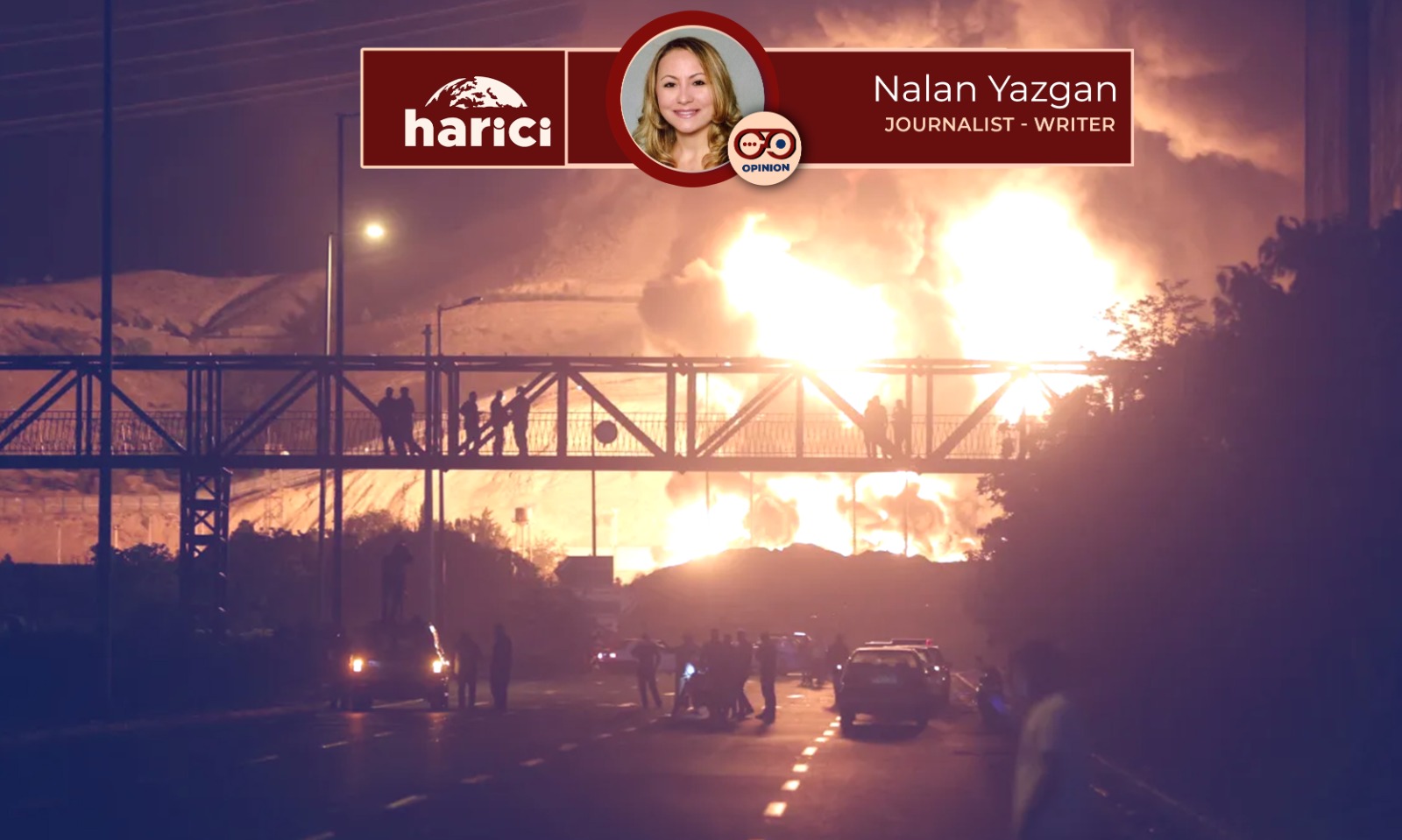
As someone who has wanted to bomb Iran for nearly 30 years, it’s not hard to understand that Israeli Prime Minister Benjamin Netanyahu has his own agenda and is using claims of Iran developing nuclear weapons as a pretext. This demonization campaign has been quite long-running. Even in the 1990s, he persistently made this claim, which had no basis in fact. In fact, US intelligence reports at the time clearly showed this claim to be false. The most recent US intelligence report, published this past March, says the same thing. Despite this, Netanyahu persists with his claims, wildly exaggerating them. One of his latest claims is that Iran will build nuclear weapons and distribute them to terrorists.
Iran’s right to a peaceful nuclear program, conducted with full transparency under the supervision of the International Atomic Energy Agency [IAEA], should be considered a normal state of affairs. Indeed, in 2015, under President Obama’s leadership, the US and the UK supported this agreement, and it was signed. At the time, Iran also stated that it had no nuclear weapons program and welcomed being fully open to inspections.
When Trump took office in 2017, he withdrew from this agreement in 2018—likely due to pressure from the Israel lobby in the US—plunging everything back into uncertainty. Trump’s “maximum pressure” policy, on the contrary, pushed Iran to increase its uranium enrichment activities. It is extremely interesting and confusing that Trump, having withdrawn from a previously agreed-upon deal during his first term, would now strive to return to it in a potential second term. It would be naive to think that Trump has learned from the past and wants to correct his mistake.
It is very clear that Israel, under Netanyahu’s leadership, wants to topple the Iranian regime using the nuclear program as a pretext. It is advancing toward this goal step by step, virtually paralyzing opposing forces and preventing them from offering any meaningful response. At this point, it is also moving away from the typical Western approach of preferring “the devil you know.”
The pretext of nuclear bombs instead of weapons of mass destruction
An attempt to bring about regime change in a Middle Eastern state was also made 20 years ago in Iraq. We witnessed the horror created by the Iraq plan, which led to the rise of ISIS and the deaths of millions. At the time, US Secretary of State Colin Powell, in his speech at the UN, said, “Saddam Hussein has chemical weapons. Saddam Hussein has used such weapons and has no qualms about using them again against his neighbors and his own people.” In his presentation, Powell used reconnaissance photos, detailed maps and charts, and even recorded phone conversations between high-ranking members of the Iraqi army. The phrase “weapons of mass destruction,” which he repeated 17 times during his hour-long speech, accompanied by information that intelligence officials had assured him was reliable, became the public justification used by the Bush administration to legitimize the invasion of Iraq.
A month and a half after Powell’s UN speech, President Bush ordered airstrikes on Baghdad. In a televised address to the nation, Bush said this was the beginning of a military operation “to disarm Iraq, to free its people, and to defend the world from grave danger.” US forces, along with their internal collaborators in Iraq, overthrew the Saddam Hussein regime within a few weeks, and evidence of Iraq’s so-called “weapons of mass destruction” was nowhere to be found.
The Bush administration used the credibility of Colin Powell—known for his opposition to war, particularly US military interventions in the Middle East—to bring about regime change in Iraq. Powell later described his UN speech as a “major intelligence failure” and a “blot” on his record. Before he died, Powell expressed his regret, admitting that his sources had turned out to be wrong, flawed, and even deliberately misleading.
If Israel succeeds in neutralizing Iran—and perhaps even turning it into an ally in the medium to long term—guess which conventional power in the region will be its next target? Efforts to demonize Türkiye have been underway for a long time, although they are currently on the back burner. A bilateral confrontation in the region would unfold on a very different footing than a trilateral balance; we had better take precautions and fasten our seatbelts.
Middle East
An assault on the Axis of Resistance: The Israeli escalation against Iran and its impact on Palestine and Gaza
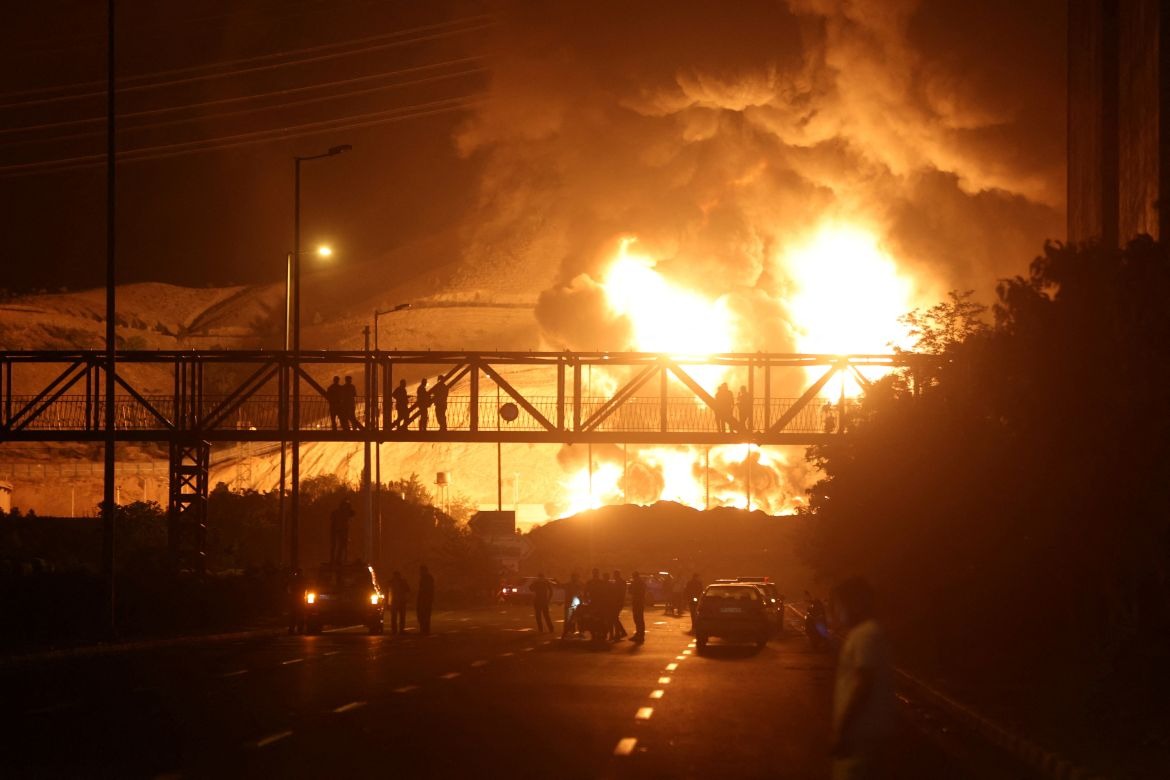
Khaled al-Yamani, Popular Front for the Liberation of Palestine (PFLP)
Events in the region are accelerating as if we are on the brink of a new political and security earthquake, led by the direct confrontation between the Islamic Republic of Iran and the Zionist entity, under blatant American complicity. This confrontation, though it appears to be military and security-based, is in essence a major war targeting the entire project of resistance — from Tehran to Gaza.
Latest escalation: Aggressive maneuvers in the name of ‘Israeli security’
The Zionist entity launched an aerial assault targeting military sites deep within Iranian territory. Under recycled pretexts — related to Iran’s nuclear and missile programs — “Israel” continues its strikes, not only against Tehran, but also against its allies in Syria, Lebanon, Iraq, and Yemen.
But what’s happening isn’t just “preemptive strikes” as Western media claims — it is the continuation of a long war waged by the United States and “Israel” against the Axis of Resistance, aiming to break the balance of deterrence established by Iran and its allies after years of strategic patience and military development.
America and Israel: One goal behind false slogans
This escalation cannot be separated from direct American direction. The Biden administration, though claiming to seek de-escalation, in practice provides full political, military, and intelligence cover for this aggression.
The goal is clear: to dismantle the Axis of Resistance and deprive Iran of any ability to support its allies — first and foremost, the Palestinian resistance factions.
The U.S. administration knows that Iran’s strength does not lie solely in its nuclear program, but in its presence in the regional equation — from Lebanon to Iraq to Palestine. Therefore, striking Iran means breaking the backbone of the Jerusalem Axis.
What does Gaza and Palestine have to do with this?
Any attack on Iran is, by extension, an attack on Gaza. What is plotted in Tehran reflects immediately in the alleys of Khan Younis and the Jabalia refugee camp. The rockets that overwhelmed the Israeli army during the “Al-Aqsa Flood” battle would not have reached the resistance without decades of accumulated Iranian support.
Now, the Zionist entity — with American backing — seeks to cut off the lifeline to Palestine and destroy the support network Iran has built for the resistance, whether in weapons, knowledge, or training.
Thus, striking Iran is not separate from the ongoing aggression on Gaza; it is a direct extension of it, and part of the suffocating siege aimed at weakening the Palestinian people’s ability to endure and resist.
The Axis of Resistance: Unity of fronts and a shared fate
The new equation imposed by the Axis of Resistance after the “Sword of Jerusalem” battle — and later the “Al-Aqsa Flood” — has become a nightmare for the enemy: the unity of fronts. No longer is Gaza alone, or the southern suburbs alone, or Sanaa alone.
Hence, the Zionist entity is now trying to preempt any emerging united front by striking at the center — Iran — before a full-scale confrontation erupts that could spell the end of “Israel” as we know it.
Conclusion: The battle continues… and Palestine remains the heart
We are facing a pivotal moment in the history of this struggle. The enemy seeks to paralyze the Axis of Resistance at its strategic core and turn the conflict into a fight for survival. Yet the Axis today is stronger than ever.
Despite the wounds, Gaza remains at the heart of this confrontation. The battle is not just being fought in Iranian territory or over the skies of Lebanon and Syria — it is being fought over the future of Palestine, from the river to the sea.
Therefore, it is the duty of all the free people of the world, and all honest journalists, to speak the truth.
If Israel emerges victorious from its ongoing confrontation with the Islamic Republic of Iran, the consequences of that victory will not be limited to Tehran or the Axis of Resistance alone. Rather, they will extend to impact the entire regional balance of power — with Türkiye’s role at the center of that shift.
An Israeli victory would, in effect, cement its dominance as an unchallengeable military force in the Middle East, fully backed by the United States. This would open the door to a new phase of political interference and pressure, especially against regional powers that still maintain a degree of independent decision-making — chief among them, Türkiye.
Türkiye, which seeks to maintain an independent and balanced role between East and West, and whose interests are intertwined with Russia, Iran, and Central Asian countries, would come under increasing pressure to reposition itself according to Israeli-American terms. It may find itself facing two options: either submit to the new regional equation, or enter an unwanted political — and possibly security — confrontation.
From this perspective, what is happening in Tehran today is not isolated from what could happen in Ankara tomorrow. If Iran falls as an independent regional power, Türkiye may be next in line.
The assault on Iran is an assault on Palestine. Defending Tehran is defending Jerusalem.
This battle has strategic implications not only for the Palestinian cause and the Axis of Resistance against Zionist-American hegemony, but its outcomes will extend across the entire region — particularly affecting major regional powers such as Türkiye, Iran, and Egypt.
If Iran stands firm and emerges victorious in this confrontation, it will strengthen the role of these countries in resisting Zionist arrogance and domination. One could even say that such a victory may bring an end to Zionist hegemony over the region and, as a result, weaken American influence as well.
It would allow these countries to become more independent and distant from U.S. control, which seeks to turn the peoples of the region into subjects by dividing them into warring sects and identities. Therefore, solidarity among these countries at this moment is one of the key elements of victory — and a potential beginning of liberation from Zionist-American domination.
Opinion
Can China Do More Than Condemn Israel?
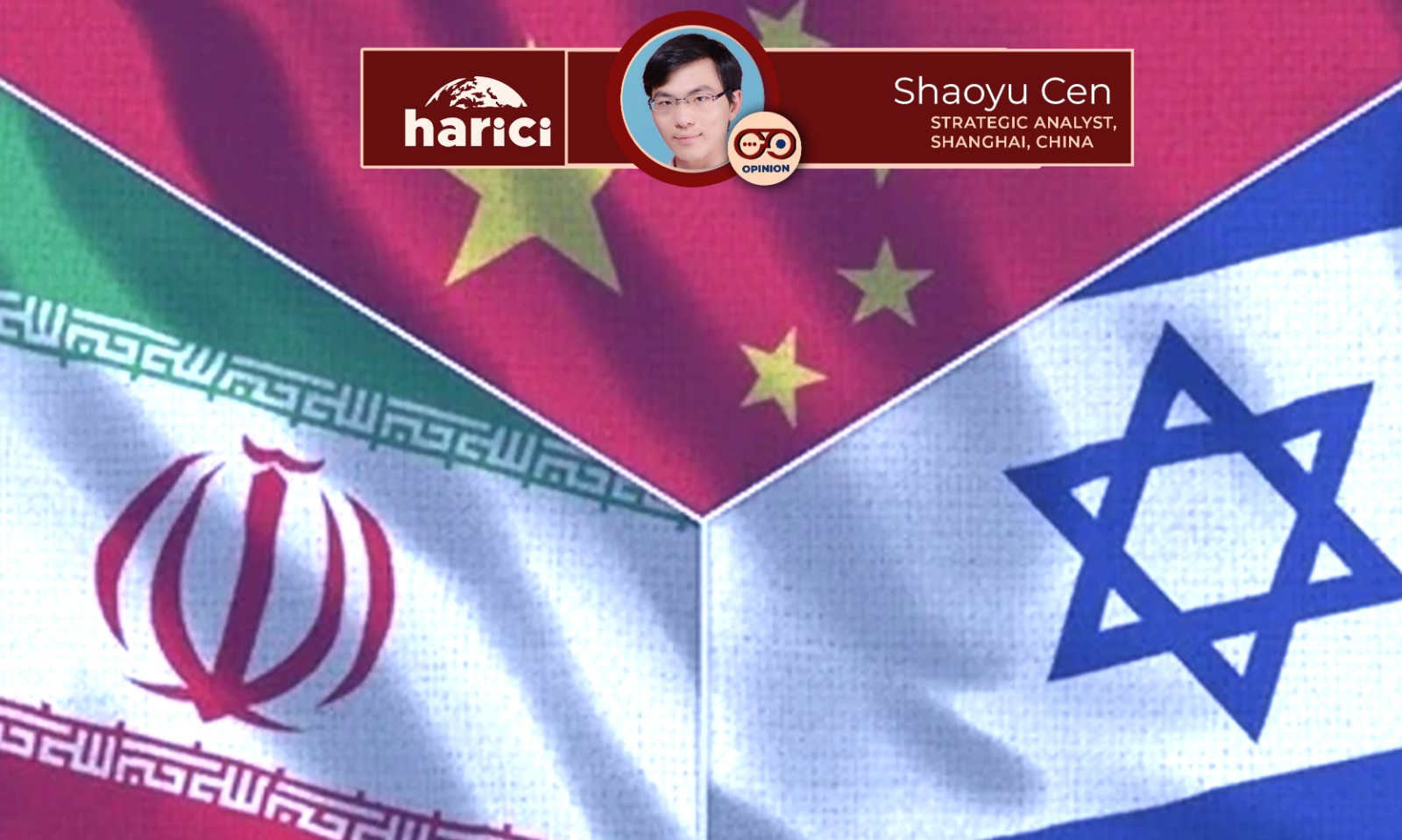
Iran suffered a heavy blow from Israel. During the first 12 hours of the attack, it even couldn’t fight back. In the wake of the sudden raid, there is increasing global discussion about potential mediators who might help de-escalate the situation. Some voices suggest that China, having played a key role in reconciling Saudi Arabia and Iran in 2023 and organizing a dialogue between Palestine fractions in 2024, could step into this new crisis as a peacemaker.
However, while China’s diplomatic achievements in the Middle East deserve recognition, it is a serious overestimation to assume that Beijing can—or should—be expected to resolve every conflict in the region. At least, not now. The Israel-Iran conflict is fundamentally different in scope, depth, and international entanglement. To understand why, it is crucial to examine both the capabilities and limitations of China’s role in Middle Eastern affairs.
The US Can’t Be Bypassed
China’s mediation in 2023 that led to the normalization of relations between Saudi Arabia and Iran was heralded as a diplomatic breakthrough. It showcased Beijing’s growing influence in a region long dominated by U.S. security interests. The agreement was emblematic of China’s preferred diplomatic style—low-key, pragmatic, and built on economic incentives and mutual respect for sovereignty.
However, the success of the Saudi-Iran rapprochement was made possible by a unique alignment of interests. Both Tehran and Riyadh had compelling internal reasons to reduce tensions. Saudi Arabia wanted a calm environment for Vision 2030 and economic transformation, while Iran was under pressure from domestic unrest and economic sanctions by the West. In this case, China acted more as a facilitator than an enforcer.
This experience cannot simply be applied to the current Israel-Iran conflict. First, the conflict between Israel and Iran is not just a bilateral rivalry but a multi-dimensional standoff involving proxy forces, ideological opposition, nuclear tensions, and deep historical hostility. Second, Israel is closely aligned with the United States, a global competitor to China, complicating Beijing’s ability to act as a neutral intermediary.
For decades, Israel has been a central pillar of U.S. policy in the Middle East—not just as a security partner, but as a forward position against the rise of any rival or “non-rival” regional powers such as Iran, Iraq, Egypt, and even Turkey and Saudi Arabia. In this context, any attempt by China to mediate would be interpreted in Washington not as a neutral peace initiative, but as a geopolitical maneuver that challenges American primacy in the region.
Even if China were to act with genuine impartiality, its growing involvement would inevitably be seen through the lens of great-power competition. A meaningful intervention cannot bypass the United States, and would likely trigger strong diplomatic push back. This turns the crisis from a bilateral issue or trilateral dialogue with China in it, into a four-party interaction—China, the U.S., Israel, and Iran—each with distinct agendas and red lines, further reducing the space for effective mediation.
Moreover, the domestic political situation within Israel adds another layer of complexity that China—or any external actor—must contend with. Prime Minister Benjamin Netanyahu has faced significant political turmoil in recent years, including corruption trials, mass protests over judicial reform and his Gaza policy, and divisions within his governing coalition. Many of his foreign policy decisions, including this attack on Iran, are widely seen as being driven more by short-term political calculations than by coherent national strategy. Even Washington post said so, too. This level of internal political instability makes it extremely difficult for external powers like China to engage in sustained, high-level diplomacy with reliable counterparts or long-term commitments.
Iran’s Willingness: A Prerequisite
Another factor that limits China’s potential role is Iran’s own willingness—or lack thereof—to accept Chinese mediation in a conflict where national survival and regional dominance are at stake. While Iran appreciates China as a strategic partner in trade, energy, and diplomatic support at the United Nations, it does not necessarily see Beijing as a military or security guarantor.
When mediating between Saudi Arabia and Iran, security guarantees were not necessary, as neither side truly believed the other would launch a direct attack. Moreover, Iran-backed forces in Yemen had even gained some advantage in their asymmetric conflict with Saudi Arabia and its allies. However, in the face of an increasingly unrestrained Israel, effective mediation is likely to require real security guarantees. Yet for China—already facing direct military pressure from the United States—offering such guarantees abroad would be an unaffordable luxury.
Moreover, the types of support China can offer—diplomatic pressure, economic aid, or even military technology—are only valuable if Iran sees them as credible and effective. In the future, what China can provide is not the security guarantee but a package of advanced defence system. This is where a critical reality intrudes: Iran may not have sufficient confidence in the practical utility of China’s military systems.
Although Iran’s air force has engaged in multiple overseas operations, its air fleet is outdated. Years of involvement in counter-terrorism campaigns against ISIS have also diverted its development focus away from achieving air superiority. Iran’s air defense systems, while more advanced and numerous than those of most countries—and supported by a domestic capacity to produce air-defense radars and missiles—still fall short when facing top-tier adversaries. The division of these systems between the Iranian Army and the Islamic Revolutionary Guard Corps further complicates coordination and effectiveness.
Modern warfare has evolved rapidly. Effective defense now requires advanced stealth fighters, advanced radar integration, electronic warfare, satellite data, and real-time coordination with air superiority assets—capabilities that Iran has not yet fully developed.
The recent aerial conflict between Pakistan and India demonstrated the effectiveness of China’s fighters, long-range air-to-air missiles, and integrated air defense and warning systems. Although the J-10CE is not China’s most advanced fighter, within a well-coordinated system, it successfully engaged and shot down India’s French-made Dassault Rafale using PL-15 missiles.
Of course, the Israeli Air Force is far more advanced and experienced than India’s, and this time it is authorized by the U.S. to deploy stealth F-35s. However, the reality remains that the People’s Liberation Army is preparing for the possibility of U.S. intervention in a future conflict over Taiwan. Countering the U.S.’s F-22s and F-35s is one of the central considerations in this scenario. If Iran aspires to effectively counter Israeli F-35s in the future, it will have very limited options other than China.
However, even Pakistan, a longtime Chinese ally with deep military cooperation ties, has shown caution in relying solely on Chinese defence system not many years ago. The fact should give pause to those who believe Iran will immediately trust Beijing to reshape its military-building decisions.
Regional Perceptions and Misconceptions
Another dimension often overlooked is how China is perceived by other regional actors. In much of the Middle East, China is respected as an economic power but not necessarily trusted as a security actor. It has no military alliances in the region, no history of enforcing peace, and only limited experience managing wartime diplomacy. Its military base in Djibouti remains its only overseas installation, and while it participates in joint exercises, China generally avoids entanglements in conflicts.
This low-profile strategy aligns with China’s broader foreign policy principles: non-interference, strategic patience, and economic focus. But these same principles limit its leverage in crises that demand rapid response, force projection, or hard security guarantees.
All of the perceptions are right. But the foundational idea of it is always misconceived. First, China itself suffered deeply under Western imperial powers for over a century. As a result, it harbors no desire to become a new hegemony in the Western mold—a stance that also aligns with its foundational communist ideology.
Second, China’s leadership draws lessons not only from its own long and turbulent history, but also from global historical patterns, particularly the rise and decline of Western powers. Perhaps the most important insight is that nearly every great empire ultimately collapsed due to overreach.
Providing security guarantees in regions thousands of kilometers away could mark a dangerous first step toward such overextension. In contrast, selling military systems—while somewhat strategic if including stealth fighters J-35 and the most advanced surface-air missiles—is far less risky and remains within the bounds of manageable influence.
This is not to say that China should remain entirely passive. Beijing can and should use its diplomatic weight to call for restraint, support ceasefire initiatives through the UN, and maintain backchannel communications with Tehran and potentially with Israel. It can also support reconstruction efforts, offer humanitarian aid if necessary, and promote regional economic integration as a long-term peace strategy.
But none of these measures should be mistaken for the kind of high-stakes crisis diplomacy needed to stop an active military confrontation. That type of intervention requires somewhat coercive tools that China currently lacks and even if it has, it could be unwilling to use.
In sum, the idea that China should intervene decisively in the Israel-Iran conflict overlooks the structural realities of modern geopolitics. While China’s growing presence in the Middle East gives it more diplomatic clout than ever before, it should not be overestimated.
-

 Diplomacy5 days ago
Diplomacy5 days agoFormer diplomat warns forcing Iran out of the NPT is the greatest danger
-

 Opinion2 weeks ago
Opinion2 weeks agoEuropean defense autonomy and Germany’s military role enter a turning point
-
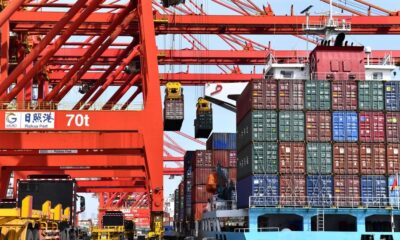
 Asia2 weeks ago
Asia2 weeks agoOECD forecasts slower Chinese economic growth due to trade war
-

 Asia2 weeks ago
Asia2 weeks agoLee Jae-myung inaugurated as South Korea’s new president, vows unity and economic revival
-
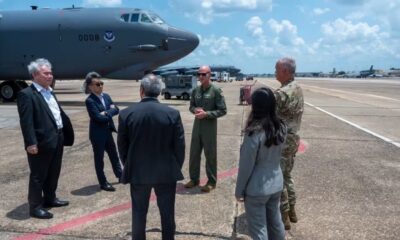
 Asia1 week ago
Asia1 week agoJapan, US showcase B-52 bombers in nuclear deterrence dialogue
-
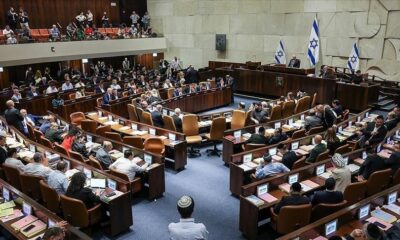
 Middle East7 days ago
Middle East7 days agoNetanyahu’s government survives no-confidence vote as Haredi crisis is delayed
-
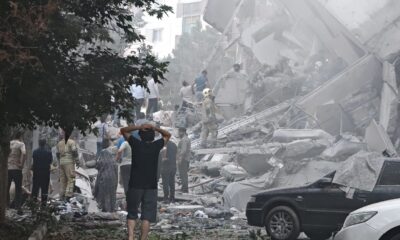
 Diplomacy5 days ago
Diplomacy5 days agoFormer CIA analyst says Israel used ceasefire talks as a trap
-

 Europe2 weeks ago
Europe2 weeks agoVatican under Pope Leo XIV warns against AI ‘playing God,’ urges ethical development




